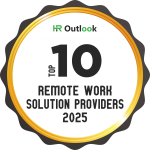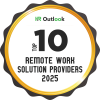Workplace Management - Interview with Tamás Berky
Tamás Berky
For almost 20 years he has been working in workplace management and organization development and taking part in development projects as a consultant.
While designing a workplace, he is focusing on the integration of different fields such as HR, process management, design and service management. Therefore such workplaces will be created where design, services and IT support optimally the operation of the organization, the well-being of employees and the workplace experience. He considers it important to plan and operate workplaces based on facts and reflect the latest international trends. For this purpose, he contributes to international researches and educations related to workplace development and operation.

When and how did you start your career as a workspace consultant?
I’ve been working as a management consultant since 2007, focusing especially on workplace management, process development and project management.
Professionally, I chose to setup and develop workspaces because this field requires cooperation and integration of all kinds of expertise, which I find extremely exciting. On the one hand a workplace, an office is a physical space, but it’s also a place where operational processes happen. The construction of these spaces has an impact on internal cooperation, the motivation of the employees and it is closely connected to the IT environment. For example, outlining a design brief requires not only understanding interior design aspects, but also business requirements, as well as an overview of corporate processes, and human resource and IT management competencies. One of the areas where I can successfully support clients is by effectively integrating aspects of various fields during the planning phase and workplace management.
Besides consulting I am working with leading European universities on workplace researches, as well as workplace design and management trainings. Therefore, I can also continually incorporate research results into specific projects. I believe that education is important, because we are talking about a constantly changing area, where a kind of professional “canon” has not developed yet. There is a need to integrate various fields, like university education and the profession of the so-called office and facility management. Personally, this field motivates me because I do not feel comfortable when the work environment doesn’t support my job properly, and I think that there are several Hungarian employees who feel the same way. But the reason behind this is not that the companies would want to neglect their colleagues’ aspects. As workplace management is an always developing area, companies often do not review this topic consciously and on time. Often, they rely on feelings rather than facts.
In my view, the concept, the timely development of strategies and a continuous operational analysis of workplaces could help efficiently in this area.
These would also have a positive effect on many people, which could then be measured by companies in higher engagement levels, for example.
What is your opinion about the local real estate market, the attitude of big corporations?
In recent years I experienced significant improvements: employee experience and the promotion of well-being are important factors for every HR manager. Remote work also became an important motivational tool, which at the same time made the utilization of office spaces more efficient. Besides motivational factors, the increase of agile management is also an important driving force, as the operation of agile working teams requires a more flexible design of physical spaces.
Undoubtedly, interior design solutions have developed as well: there are more and more offices that could compete with their physical characteristics on any developed real estate market. However, besides all the positive changes, we also need to mention the attitude of in-house departments, because they are not always connected to each other. Therefore, solutions are often found, where the design doesn’t reflect business and employee aspects properly. This way, inadequate environments are created at a high price. There are several office solutions that look great but were taken from catalogues and do not necessarily fulfill the organization’s or its people’s real needs. So ultimately, they can even be annoying. A new approach regarding workplaces doesn’t consider offices as a cost factor, but rather a development tool for resources, motivation, experience and operation. This attitude is already present among professionals, but the reality is that cost-oriented approaches and rapid and significant expansions of the office market are more common in office development. Developers are obviously avoiding risks and they do not believe that people would pay for higher quality. Therefore, mainly conventional office buildings are being built. However, things started to change with the increase of competition within the fields of labor market and office market.
What are the main problems you see in the Hungarian offices? What should the companies and the SSCs pay attention to?
Physical environments of offices are not independent of organizational operations. They have a fundamental impact on motivation, health and daily performance. The fact that an office is really tailored to the operation of a particular company also determines the utilization of the office, and this way operating costs and renting fees can be optimized.
It is also worth mentioning that we perform various activities during our daily work routine, with different space and equipment requirements. Our personalities, our daily rhythms and our relationship with the physical environment are different. Things that motivate one person, might disturb another.
Therefore, it is a general rule that workplaces shouldn’t be designed based on trends or good-looking templates, but on facts. It needs to be analyzed what kind of activities are being performed in the office, what the daily schedule of the colleagues looks like and how they can be optimally supported. Due to the diversity of activities and co-workers, there is not one optimal environment solution, but instead different spatial options and services should be provided for them. What exactly these should be, needs to be tailored to the organization’s current operations, future goals and its brand. As business environments are continuously changing, it is also important to monitor the operation and the usage of offices. Besides physical environments it is also worthwhile to create a related, digital environment, which supports co-workers in desk booking , cooperation or accessing the daily menus or any well-being services.
Would you share any previous experiences or client stories?
Perhaps I could highlight that workplace environments are developing “from beneath”. By analyzing the perspective of the colleagues and their daily processes, effective solutions could be offered within days that would have a substantial effect on fluctuation, for example.
By monitoring the workspace over a one or two-month period and by establishing a workplace concept, measurably more efficient solutions can be offered already during the planning phase in terms of office costs and employee loyalty, avoiding later cost changes or empty office spaces.
For the first case I can share a personal story. As an expert I was asked to analyze the work environment of employees working at a major manufacturing plant in the field of facility management services. Due to the significant fluctuation, within a short period of time, we were able to find specific solutions in the day-to-day processes that could change this.
For the second case I would give you the example of a major financial service provider, where we developed the concept of a new work environment along with the designer and the real estate agency. This lays the groundwork for a workplace with previously dedicated workstations to move toward a more flexible, agile workplace. In this case we had to conduct surveys and understand the operation of the business within a short period of time.







